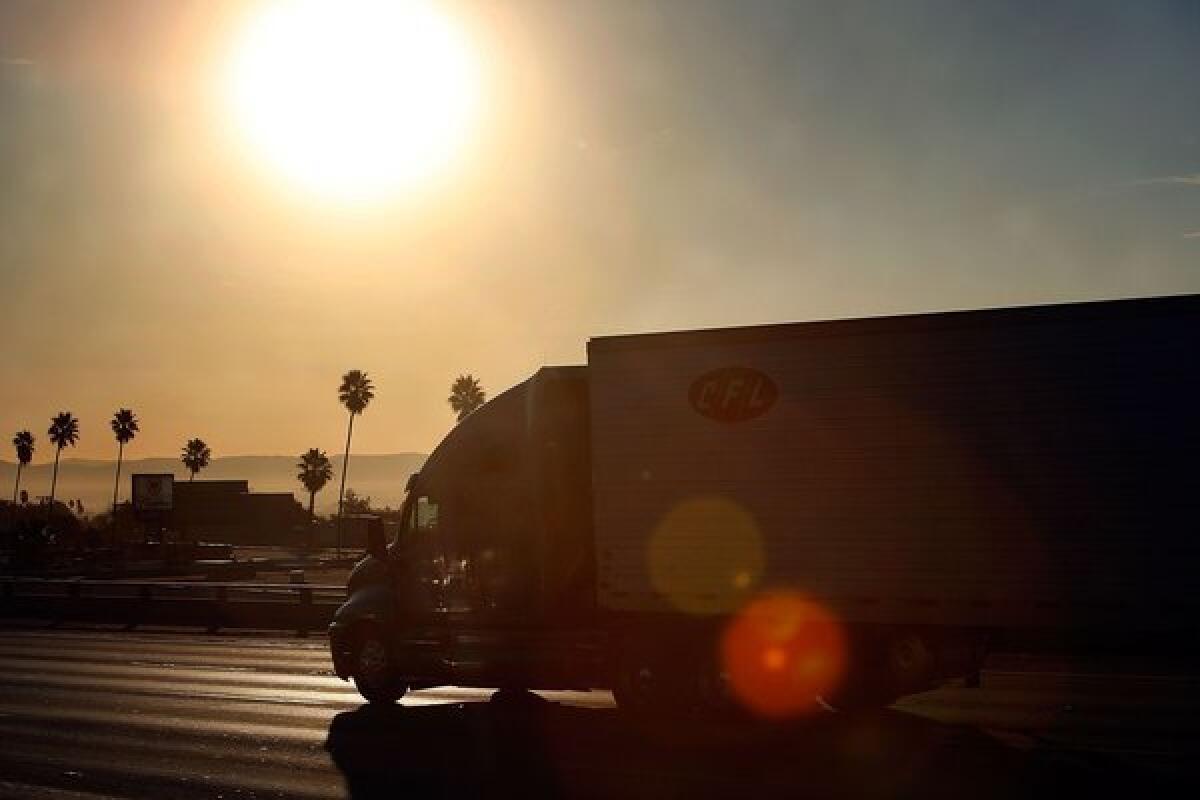Schwarzenegger: California’s silent disaster

- Share via
I will always remember the day I woke to the news that more than 2,000 fires were burning in California. I thought I must not have heard correctly. Two thousand fires? How could that be?
In the end, the state’s brave firefighters, joined by contingents from out of state, won the battle. But not before 11 emergency declarations were issued and more than 400,000 acres burned. Countless lives and livelihoods were ruined.
Today, there’s a new disaster looming, and although it’s not as riveting or dramatic as walls of flames and billowing black smoke, it needs our immediate attention. The draft National Climate Assessment, now being circulated for comment and scheduled for release this year by the U.S. Global Change Research Program, presents a sobering vision of the world that awaits us if we don’t act.
This team of top climate scientists has concluded that our region of the country is hotter than it has ever been and that it will get hotter — because of humans. The last decade was the hottest the Southwestern U.S. has experienced — on average 2 degrees warmer than it had been historically. The scientists project a further increase over the next 50 years of 6 to 9 degrees if we do nothing.
Already we are seeing the effects of a warmer climate: droughts and heat waves that threaten lives, and, yes, fires.
This shift could spell disaster for California, long the nation’s agricultural powerhouse. The state produces more than half of the fruits, nuts and vegetables grown in the U.S., with an output of $43.5 billion last year. Californians don’t rely just on the food produced by the state’s farms; they rely on the revenue and the jobs too. Agriculture employs more than 1.5 million people in California.
This report spells out many other negative effects that rising temperatures will cause in California. Over the last 100 years, sea levels have risen about 7 inches, and the San Francisco Bay Area is already feeling the effects. A sewage system there was flooded with saltwater, and the 101 Freeway has seen flooding. This isn’t a distant threat.
Now, we are facing another rise in sea level of 1 to 4 feet. A rise of just 16 inches would be enough to endanger roads, highways and airports in San Francisco and Oakland. It could contaminate crucial groundwater in Los Angeles.
Heat is already the leading cause of weather-related deaths, and the expected temperature increase will mean longer and hotter heat waves, like the one that killed 164 Californians during a blistering week in 2006.
That’s the bad news contained in the National Climate Assessment. The good news is we can do something to prevent these dire outcomes.
The report should be a wake-up call for leaders in Washington to overcome gridlock and start working on solutions. For models of how to proceed, they need only look to California and other states and cities that have begun to move forward in a bipartisan way.
The first step for policymakers — and for ordinary citizens too — is to understand the situation we face, which means carefully reading the National Climate Assessment. It may not be as gripping to look at or have the provocative appeal of a raging wildfire or another act of God, but the knowledge in this report is crucial to understanding how to change, to adapt, to prevent and to prepare for future disasters.
It’s our duty to pay attention.
Arnold Schwarzenegger is a former governor of California. The USC Schwarzenegger Institute is hosting a public comment forum on the National Climate Assessment on Monday in partnership with the Center for Sustainable Cities.
More to Read
A cure for the common opinion
Get thought-provoking perspectives with our weekly newsletter.
You may occasionally receive promotional content from the Los Angeles Times.










